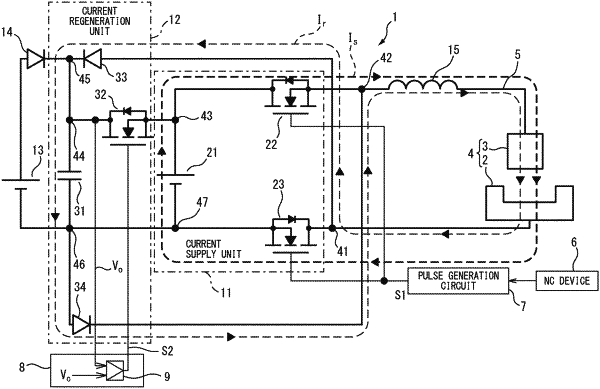| CPC B23H 1/022 (2013.01) [B23H 2300/20 (2013.01)] | 4 Claims |

|
1. A power supply device for an electric discharge machine, comprising:
a current supply unit for supplying a pulsed current to an electrode gap constituted by a workpiece and an electrode, which are opposed to each other with a predetermined gap, for electric-discharge machining a workpiece, and
a current regeneration unit for regenerating the current, wherein
the current supply unit comprises:
a first DC power supply for applying a first voltage which generates the current to the electrode gap and which is connected in parallel with the electrode gap,
a first switching element which is arranged between the electrode and a side of a first pole of the first DC power supply and which is turned on while the first voltage is being applied to the electrode gap, and
a second switching element which is arranged between the workpiece and a side of a second pole of the first DC power supply and which is turned on while the first voltage is being applied to the electrode gap, and
the current regeneration unit comprises:
a capacitive element which is arranged between a first connection point between the electrode and the first switching element and a second connection point between the workpiece and the second switching element, and
a third switching element which is arranged between a third connection point between the first connection point and a first side of the first DC power supply and a fourth connection point between the second connection point and one side of the capacitive element and which is turned on when the voltage of the capacitive element exceeds a preset second voltage which is higher than the first voltage during regeneration of the current so as to maintain the voltage of the capacitive element at the second voltage.
|